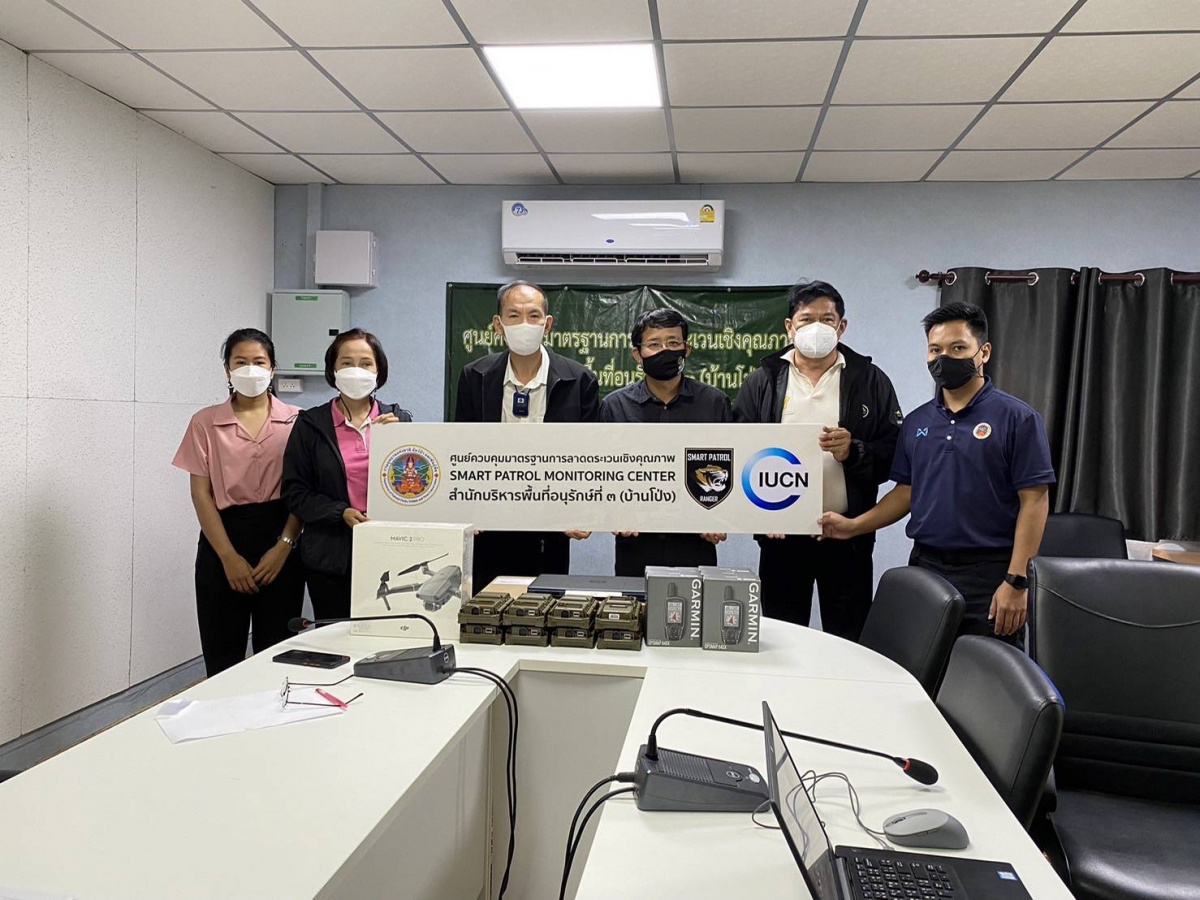IUCN provides equipment to establish a SMART Patrol Monitoring Center and discusses cooperative plans to conserve and rehabilitate tiger populations in the south of the Western Forest Complex
On 11 December 2021 – The International Union for Conservation of Nature (IUCN) delivered equipment and tools, including computers, drones, and camera traps, to support the establishment of a SMART Patrol Monitoring Center for the Protected Area Regional Office No.3 in Ba Pong. Discussions also took place on ways to cooperate in the conservation and rehabilitation of tiger populations in the south of the Western Forest Complex (sWEFCOM). Mr. Niphon Chamnongsirisak, Director of the Protected Area Regional Office No.3 (Ban Pong), also met with officials from the Wildlife Conservation Office as well as representatives from Thong Pha Phum National Park and Lam Klong Ngu National Park.

Photo: Pratheep Mekatitam
Mr. Pratheep Mekatitam, an IUCN Project Officer, notes that the southern portion of the Western Forest Complex is an incredibly important space for the rehabilitation of Thailand’s tiger populations, as its forests connect the Huai Kha Khaeng Wildlife Sanctuary and Thung Yai Naresuan Wildlife Sanctuary – Thailand’s most important tiger habitats, as well as the Tanintharyi Nature Reserve in Myanmar. Researchers have found that tigers move across these four forest areas spanning Thailand and Myanmar in search of habitat, it is therefore essential to develop international collaboration on transboundary tiger conservation in order to best protect the species in this region.
This work has taken place as part of IUCN’s “Accelerating Tiger Recovery” project along the Thailand–Myanmar Border. The main objectives of this project include: 1) Understanding the distribution and status of tiger and prey populations in the sWEFCOM, which have been significantly enhanced as a result of IUCN’s work to strengthen monitoring, research and information management; and 2) Introduce protected area management and tiger conservation efforts in sWEFCOM, which has been targeted through enhanced patrolling, community engagement and international collaboration.
This project has also supported the FREELAND Foundation, the Zoological Society of London (ZSL) and Pantera-Thailand to conduct a surveys and assessments of tiger and prey populations in the sWEFCOM, including Khao Laem National Park, Sai Yok National Park, Srinakarin Dam National Park, and Erawan National Park. In addition, this project has also helped the Protected Area Regional Office No.3 (Ban Pong) to establish its SMART Patrol Monitoring Center to ensure patrols are in compliance with standards, alongside supporting the creation of an information center on tigers and their prey in the sWEFCOM. The survey data on tiger populations and their prey collected as part of this project will further assist forest conservation officials in coordinating the SMART Patrol System and improving their working efficiency.
Mr. Niphon Chamnongsirisak extended his thanks to IUCN and the Department of National Parks, Wildlife and Plant Conservation for supporting the establishment of the SMART Patrol Monitoring Center, which will help to better protect the forests and wildlife of the sWEFCOM. The equipment and tools provided through this project will help to conserve the plants and animals living in the protected areas in the sWEFCOM, which cover a vast range of land. This will also require close collaboration among allied domestic and international organizations in order to ensure the continued conservation and rehabilitation of these tiger populations.
In 2022, IUCN plans to expand the deployment of camera traps surveying tiger populations in the sWEFCOM to cover two additional protected areas: Thong Pha Phum National Park and Lam Klong Ngu National Park. IUCN also plans to conduct SMART Patrol Training to enhance the potential and capabilities of patrol officers and will also provide equipment and tools to support their work with a focus on safety.
